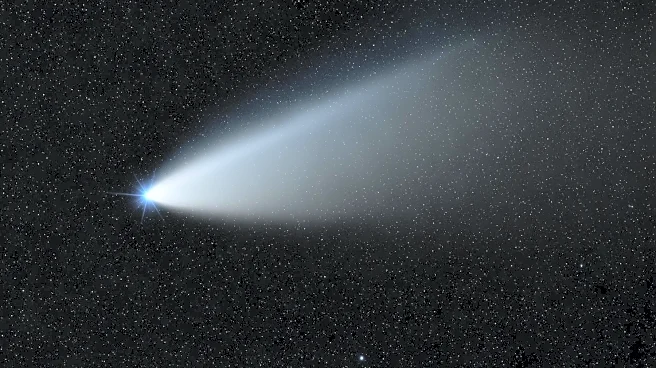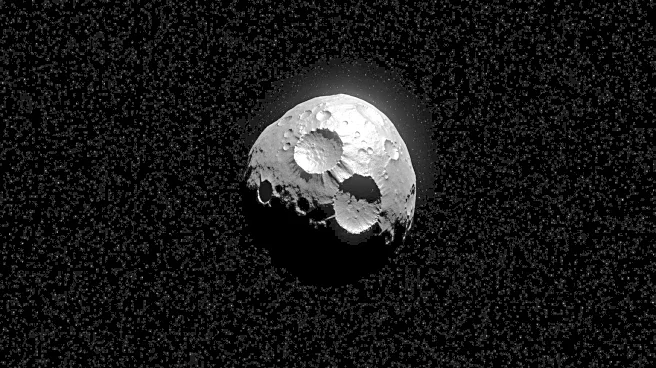What's Happening?
Astronomy Magazine reports that the dwarf planet Ceres is making a close approach to a background star within the constellation Cetus the Whale. This celestial event is notable for its visibility, as Ceres,
an eighth-magnitude object, is positioned just 6 minutes southwest of a ninth-magnitude star. Observers can locate Ceres by using the bright 1st-magnitude Saturn in northeastern Aquarius and the 3.6-magnitude Iota Ceti as reference points. Ceres will be at its highest point in the sky, approximately 40 degrees above the southern horizon, around 9 P.M. local time. The event provides an opportunity for amateur astronomers to observe the motion of Ceres against the backdrop of stars, with the Moon in a waning gibbous phase, 82% illuminated.
Why It's Important?
The close approach of Ceres to a background star offers a unique observational opportunity for astronomers and enthusiasts alike. This event highlights the dynamic nature of celestial bodies and their interactions within our solar system. Observing Ceres' movement can enhance understanding of its orbit and characteristics, contributing to broader astronomical studies. Such events also engage the public's interest in astronomy, potentially inspiring educational activities and increasing awareness of celestial phenomena. The visibility of Ceres against the backdrop of Cetus provides a practical example of how amateur astronomers can track and study distant objects, fostering a deeper appreciation for the complexities of space.
What's Next?
As Ceres continues its path through Cetus, astronomers and sky watchers will have additional opportunities to observe its movement in the coming days. The event may prompt further observational studies and discussions within the astronomical community, potentially leading to new insights into the behavior of dwarf planets. Educational institutions and astronomy clubs might organize viewing sessions to capitalize on this event, promoting community engagement and learning. The ongoing observation of Ceres could also contribute to refining models of its orbit and understanding its interactions with other celestial bodies.
Beyond the Headlines
The observation of Ceres in Cetus underscores the importance of amateur astronomy in contributing to scientific knowledge. Events like these can stimulate interest in space science and encourage public participation in scientific endeavors. Additionally, the visibility of Ceres against a starry backdrop serves as a reminder of the vastness and complexity of the universe, prompting philosophical and cultural reflections on humanity's place within it. Such celestial events can also inspire artistic interpretations and cultural expressions, enriching the dialogue between science and the arts.











